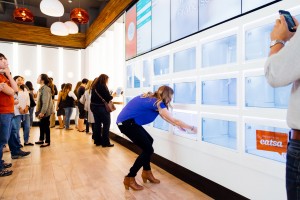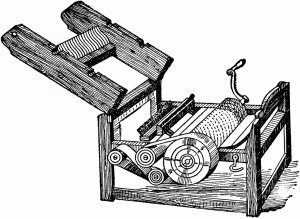Maria Starko’s Blogpost discusses a quinoa bowl restaurant in California called Eatsa.
Eatsa; Image Source
The restaurant is unique because it “allows customers to get a meal without interacting with a single person”. Customers enter an order into a computer, and receive their food out of a cubby in the wall. The only human workers in the restaurant are the cooks. The post got me thinking; how far could automation like this go? The viral video “Humans Need Not Apply” clams that there isn’t really a limit to how far it could go. At first that thought didn’t sit with me well. What will we do when there are no jobs left for us?
It is human nature to want to get the most work done with the least amount of effort. Two hundred years ago Eli Whitney’s cotton gin made separating cotton fibers from the seed an automatic instead of a manual job.
Cotton Gin; Image Source
Now Eatsa is making something as personal as waiting tables an automatic instead of a manual job. Is that really so bad though? Within the next 20 years, we can expect nearly every aspect of the transportation industry to be automated. Divers, captains, and pilots will be replaced by a machine that does their job better and at lower cost. More and more jobs get taken over by automation every day, but unlike Ms. Starko, I don’t think that is inherently bad. We shouldn’t halt our progress as a species simply to reduce unemployment rates. We should work towards a more sustainable, productive future. If that means that some electrical employees are going to take over along the way, it’s fine by me.

